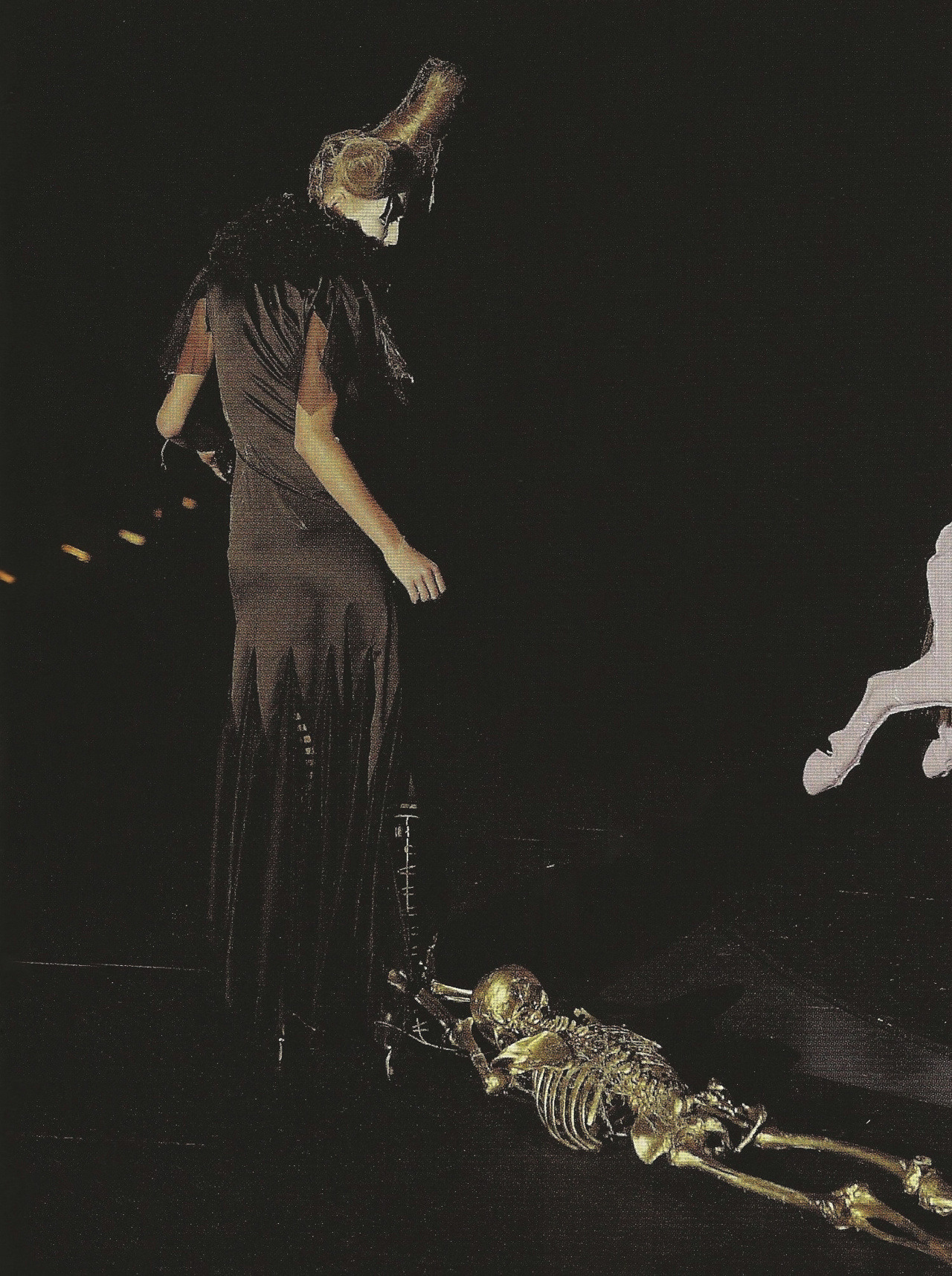Featuring a heavy-metal soundtrack interspersed
with children’s music and horrific goth clowns dancing around a traditional
carousel, McQueen’s Autumn/Winter 2001 collection (which can be seen in full here) highlighted all of his
best-known attributes. Playing on his skills as a showman, the set was dressed
up like a gothic fairytale complete with skeletons being dragged across the
floor and libidinous models writhing up against the poles of the carousels –
like some perverse reinterpretation of the Brothers Grimm, McQueen managed to
create a spectacle that straddled the lines of acceptability.
As for the clothing itself, the general rule
appeared to be ‘the shorter the better’. Hemlines were hitched up and the mood
for the most part of the show was almost aggressively sexual; orange and black
were the main colours, reflecting the Halloween-like theme of both the
collection and the presentation. McQueen also played on the clown make-up of
some of the models, showcasing distorted versions of the harlequin checkerboard
print in sheer materials as well as metallic golds and shimmering blacks. There
was also, naturally, more than a mere hint of leather and chain embellishment –
designed to accompany the metal soundtrack, the models walked the runway in
cool, punky versions of the LBD with gelled black hair, showing that even the
most classic dress formulas can be reworked.
There was an also an element of the dishevelled
about the clothes themselves – hemlines appeared ripped and tattered, whereas
flapper dresses and tailored suits were all slightly deconstructed to add a DIY
edge. The aim of the show appeared to be to take a slick 1920s aesthetic and
subvert it entirely. The flapper girls were present and so were the feathered
headpieces (designed by McQueen’s friend, the iconic Philip Treacy) but they
were taken and proverbially raped, turning showgirls into strippers and beauty
into sleaze.
Overall,
the show displayed a new take on the designer’s notoriously macabre aesthetic.
It was a more literal interpretation, one which took a charming 1920s circus
and painted it black by injecting a healthy dose of Gothicism into an otherwise
romantic setting. It is one of McQueen’s lesser-known shows but one which is
still both relevant and influential – for further proof, see Marc Jacobs’ final
collection for Louis Vuitton. It may not be down as one of McQueen’s greatest
collections, but it is still a fine example that he does horror better than any
of his predecessors.




No comments:
Post a Comment